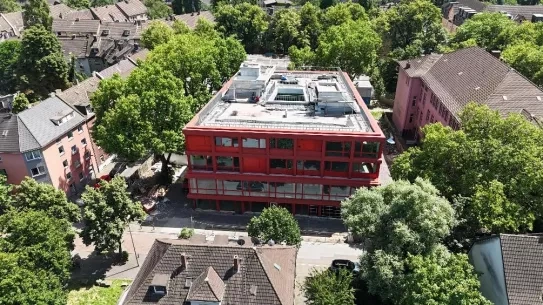Beautiful, Sustainable, Together: Reimagining Mechelen’s Relationship with Water, Biodiversity in Urban Public Space while Tackling Gentrification.
I arrive in the city centre of Mechelen late in the evening on a day in June 2024. As I am walking from the train station to the accommodation, I walk along the river Dijle. Knowing that the river Dijle is at the heart of the EUI-funded project WATSUPS (Water as the Source of Urban Public Space - a New European Bauhaus Demonstrator), my routing, although a detour, was not entirely coincidental. What I experienced in the first hour of arriving in Mechelen captures the project's ambition so beautifully: Mechelen is a city longing to reconnect to the water – but the public spaces do not reflect this need…. yet.
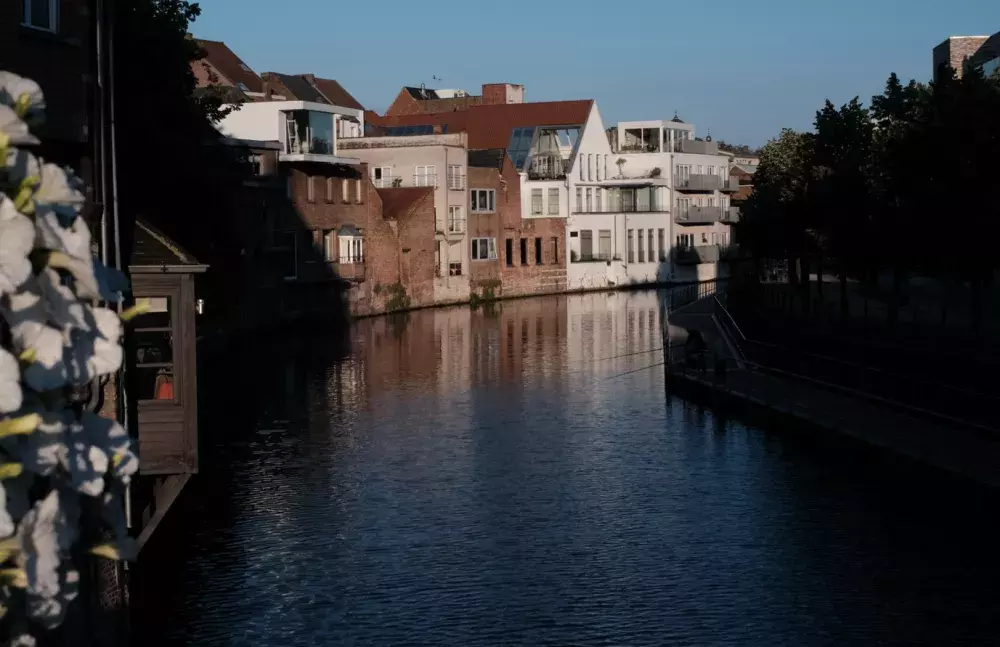
Figure 1: The Dijle in the city centre of Mechelen. The Dijlepad can be seen on the right with two fishing rods hanging over the water on a warm day in June 2024. (Photo by Johannes Riegler)
Stopping and observing at various places along the river Dijle, I could witness how people gather and have a good time in the public spaces along the river. All the tables at Vismarkt, a central square next to the Dijle, with restaurants, cafés and bars were taken with people chatting the evening away. The waterbirds below the street level were looking for any pieces of food that might fall from the restaurant goers to quickly drag it into their nests in the rare spots of green along the quay walls. Youngsters were looking for how to get closer to the water to watch the sunset, fishermen were using the Dijlepad, a 1.5km long boardwalk in the river installed in 2012 for catching a bite for the next days, while others enjoyed themselves with friends and families on private terraces in their backyards having the privilege of direct access to the water.
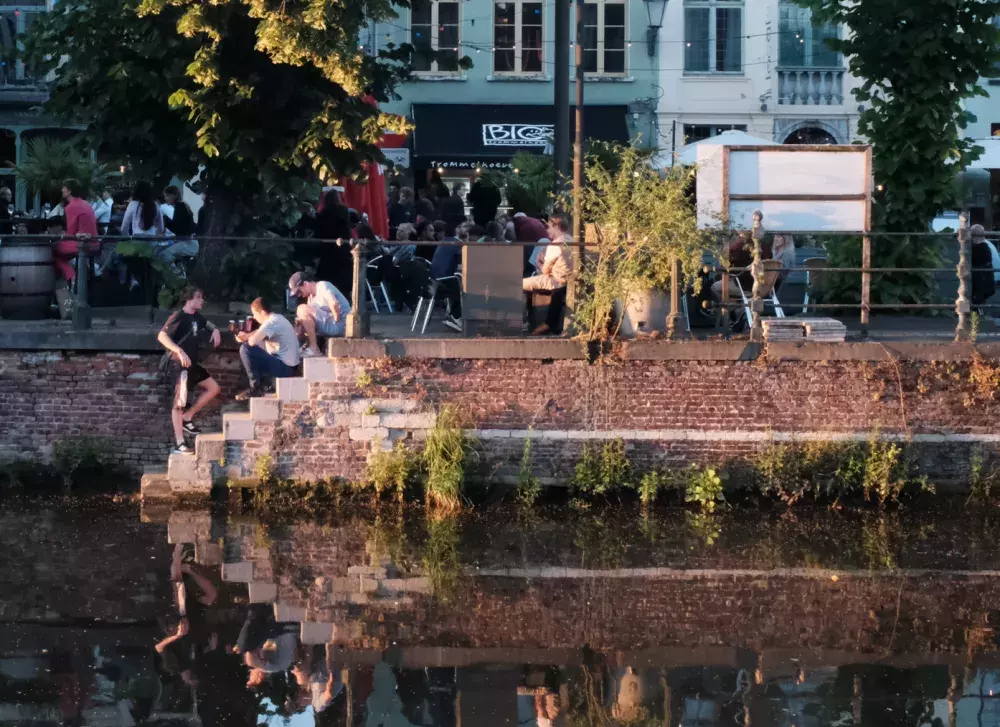
Figure 2: Youngsters seeking space along the water to enjoy the sunset while restaurant goers enjoy the warm June evening. (Photo by Johannes Riegler)
Water in urban areas: A once neglected key component for liveability and sustainability.
Mechelen is a city of about 90.000 inhabitants (STATBEL, n.D.) in the Belgian Region of Flanders located on the industrial axis between Antwerp and Brussels. The city centre is characterised by its medieval and Renaissance architecture with the River Dijle running through the city being a central landmark.
As in many other cities, from medieval times onwards, the perception of rivers running through city centres was primarily economic: a waterway that connects local production and related activities to other places and markets. These waterways contributed to Flanders’ economic flourishing. However, industrial activities and increasing urbanisation left their marks on the rivers. Many became sites of heavy pollution resulting in declining water quality, destroyed local ecosystems and, not seldom, the water became a health hazard. Over centuries, cities “turned their back” to the water, architecturally and culturally. The rivers became neglected. So too in Mechelen, where although the Dijle runs through the heart of the city, the spaces between the water and street level are constructed as barriers, rather than connectors.
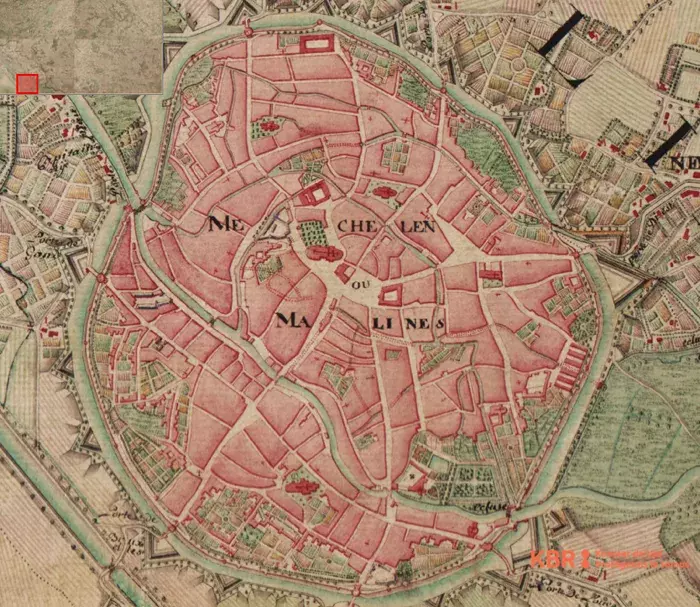
Figure 3: Mechelen on the Ferraris map, drawn in the late 18th century. The structure of the city centre remained largely unchanged. Source: www.kbr.be/en/the-ferraris-map
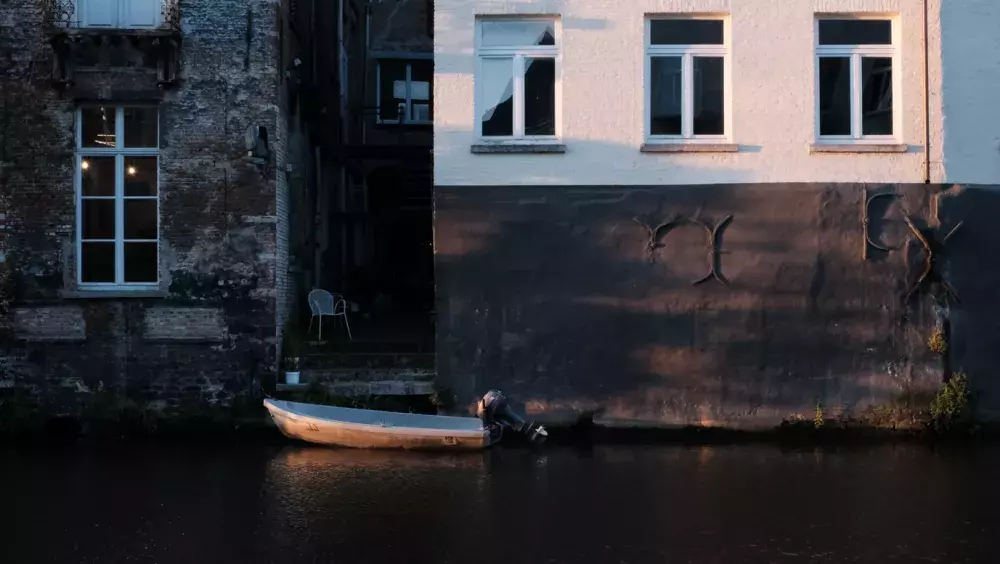
Figure 4: Mechelen's built environment often "turns it's back" to the river Dijle. (Photo by Johannes Riegler
In the past decades, many urban areas throughout Europe have been rediscovering and rebuilding their connection to the once-neglected waterways, not least, because cities and water have received increased attention in high-level policy debates and agendas such as UN’s Agenda 2030 (United Nations, 2015) (reflected in the Sustainable Development Goals #6 and #11), the European Green Deal (European Commission, 2019), the New Leipzig Charter - Dimension on Green City (European Commission, 2020) and many more. Water in cities has become of strategic importance for enhancing liveability, increasing attractiveness and strengthening local economies. Water in cities also contributes to mitigating and adapting to societal challenges such as the climate and biodiversity crises (UN, 2021).
Besides these strategic considerations, as the scene of my evening arrival to Mechelen shows, rivers and water in urban areas have become increasingly popular. However, direct public access to the water is scarce. Leaving the riverside to private developers and businesses, risks unjust development by privatisation of spaces with a focus on consumption, rising rents and housing prices due to the market logic of the interests for the highest monetary returns, risking gentrification.
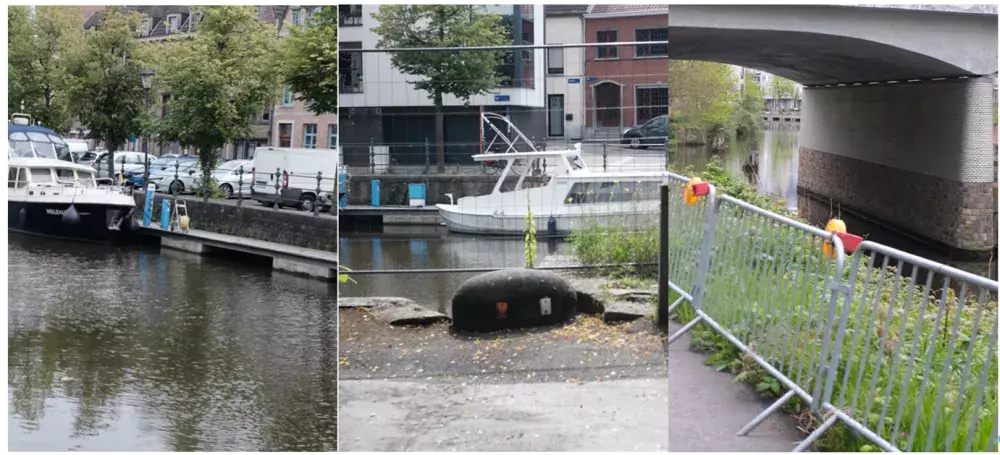
Figure 5: While the public spaces are currently often disconnected from the water of the Dijle… (Photo by Johannes Riegler)
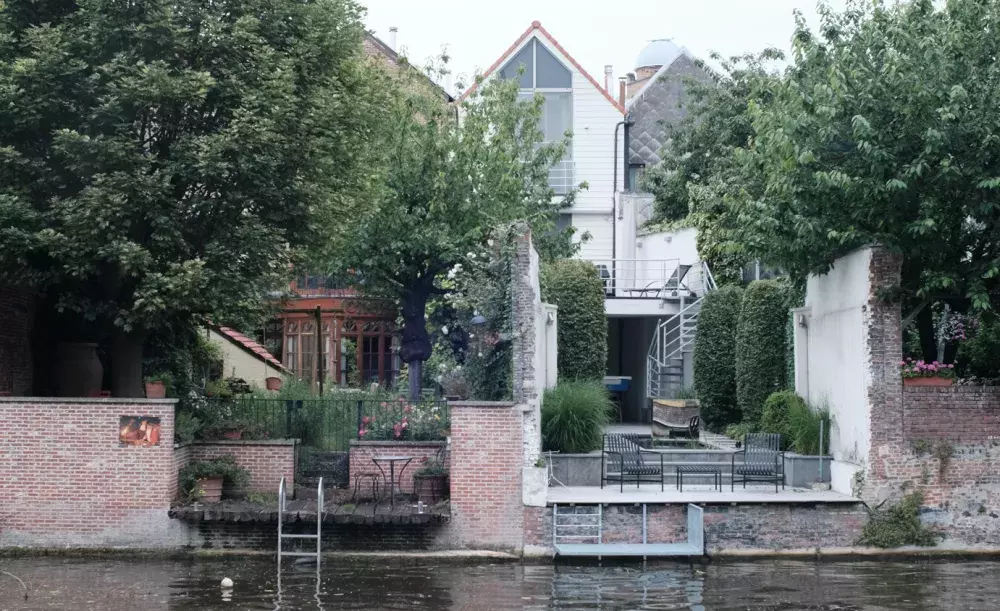
Figure 6: ... recently renovated, private buildings often offer direct access in their backyards to the water. (Photo by Johannes Riegler)
WATSUPS: One of the most innovative and ambitious projects in Europe reconnecting people with the more-than-human.
During my first stay in Mechelen, I had the chance to meet with the team who initiated the EUI-funded project WATSUPS working for the City of Mechelen, other involved services and city departments, as well as more project partners working on the implementation of the project. Besides meeting in a wonderful, medieval room in the city hall, we walked and biked to all the sites and had long conversations. I took notes, recorded interviews and foremost, learned about the context and the project. It soon became clear to me that this is not a mere urban public space redevelopment project. It is much more than that. It might be one of the most innovative and ambitious projects to reconnect humans with nature to improve the liveability of the residents (humans, animals and plants) while ensuring everyone has access to the amenities.
WATSUPS will develop new public spaces along the river Dijle to become a visible blue-green corridor. The spaces will be designed to connect people to the water, to each other and to nature. We visited the various sites of the project which all are going to provide different uses and functions:
- Keerdok – A swimming zone in open water
- Artbridge – Using art to raise awareness of nature
- ‘t Veer – Inclusive public space design for connecting street-level with the water
- Dijle Straat / Tichelrij - Dobbelhuizen– Connecting the street level to the water with inclusive public space design
- A blue-green eco-corridor
- Transit W – A place for the youth to enjoy nature and the water by building DIY furniture
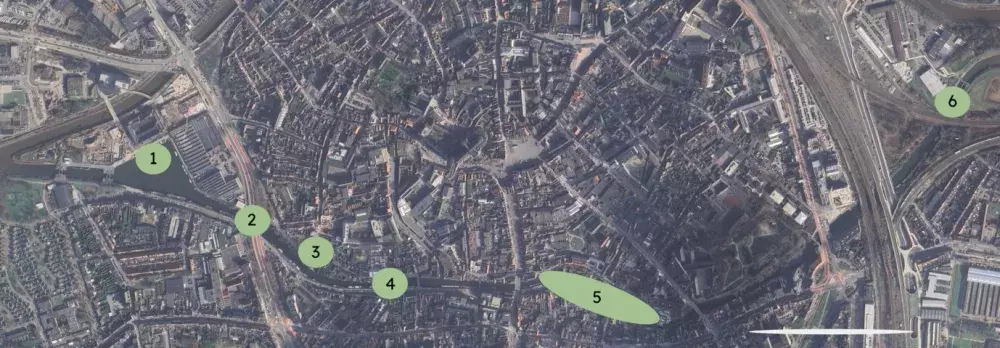
Figure 7: Satellite image of Mechelen with marks of the WATSUPS sites. (Source: Google Earth; editing: Johannes Riegler)
Mark van der Veken (City of Mechelen) and Sarah Rohaert (Thomas Moore University of Applied Sciences) enthusiastically report on their recently successfully finished citizen assembly where over four weekends, a sample of Mechelen’s inhabitants came together, to co-create principles for designing and redeveloping the public spaces along the Dijle. Besides the needs, requirements and preferences of different groups of society, these workshops, are aimed at something radically innovative: Taking into account the more-than-human perspectives, needs and requirements and in addition to that giving a voice to nature (more information on the process and the outcomes will be highlighted in my future articles and outputs covering the work of WATSUPS).
Redefining the Mechelen’s urban-river connection
Over the next three and a half years, WATSUPS will significantly change the City of Mechelen. On the one hand, it will redefine the city’s connection with the river Dijle in truly innovative ways: This connection will be physical as changes in the built environment will allow access to the water for inhabitants throughout the city. It will also implement new uses such as permanent swimming zones (even in winter), places where children can experience more-than-human life along the river, where residents can meet and children and youth can practice outdoor activities and sports. However, WATSUPS is more than an infrastructural and design project. By localising the principles of the New European Bauhaus (beautiful, sustainable, inclusive), the project’s true innovative spirit lies in how the urban transformations are taking shape. By planning to use arts and culture, virtual reality, innovative workshop techniques, nature-based solutions and other cutting-edge methods, tools and techniques, the project aims to let Mechelen's inhabitants reconnect to nature and cultivate mindsets of caring and empathy for each other and the more-than-human. WATSUPS will spark a deeper sense of community and environmental stewardship in urban areas and might emerge as a model for many cities looking to combine urban development with ecological and social consciousness.
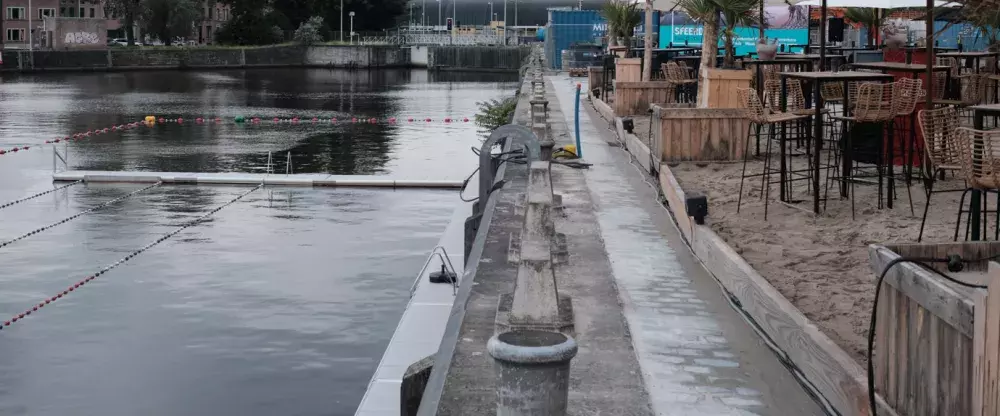
Figure 8: Temporary swimming zone at Keerdok. WATSUPS will build a permanent, year-round swimming zone. (Photo by Johannes Riegler)
Sitting on the train, leaving Mechelen after my first visit, I am truly inspired. WATSUPS connects with many recent debates on urban transformation policy and cutting-edge academic research and innovation. It is a project redefining the concept of nature in cities viewing it as not only infrastructural but as a cultural aspect. By developing principles to include the voices of the more-than-human world, WATSUPS paves the way towards highly innovative ways of policy making. The project connects topics of society, economy, planetary boundaries, culture, arts, aesthetics, design, and politics, as well as world-views and values, and thus, is leading the debate of how the New European Bauhaus could be demonstrated in cities. It is a project of importance far beyond the City of Mechelen. Stay with us over the next years to find out more about Mechelen’s transformation in reconnecting the city, and its inhabitants (including those native animals and plants living in and around the Dijle) to the water.
Bibliography
European Commission. (2019). The European Green Deal. European Commission. https://ec.europa.eu/commission/presscorner/detail/en/fs_19_6722
European Commission. (2020). New Leipzig Charter: The transformative power of cities for the common good. European Commission. https://ec.europa.eu/regional_policy/en/information/publications/communications/2020/new-leipzig-charter-the-transformative-power-of-cities-for-the-common-good
STATBEL (n.d.) Bevolkering Per Gemeente. Source: https://statbel.fgov.be/sites/default/files/files/documents/bevolking/5.1%20Structuur%20van%20de%20bevolking/Bevolking_per_gemeente.xlsx (retrieved: 21 July 2024)
United Nations. (2015). Transforming our world: The 2030 Agenda for Sustainable Development. United Nations. https://sdgs.un.org/2030agenda
UN (2021)The United Nations World Water Development Report 2021: Valuing Water. UNESCO, Paris
About this resource
The European Urban Initiative is an essential tool of the urban dimension of Cohesion Policy for the 2021-2027 programming period. The initiative established by the European Union supports cities of all sizes, to build their capacity and knowledge, to support innovation and develop transferable and scalable innovative solutions to urban challenges of EU relevance.
Similar content

